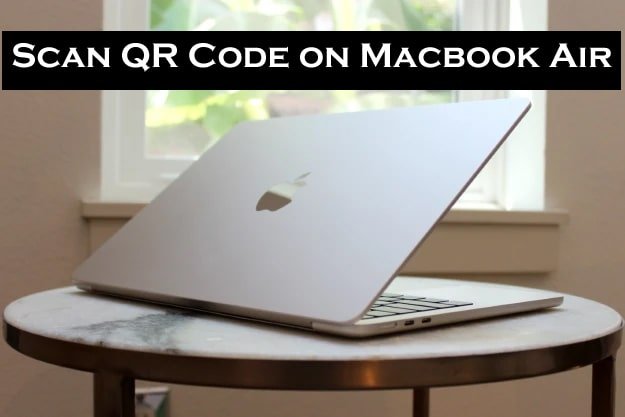How to Clean Out Dust From Your MacBook or iMac

Dust accumulation can be a serious problem for all types of electronic equipment. Not only that, but if you leave dust on for too long, it can turn into the dirt – and dirt is harder to clean and can lead to more problems. You’ve seen what kind of gun can become on your keyboard and mouse, haven’t you? Imagine this happening inside your computer. If possible, you need to practice good maintenance skills to keep it from going bad.
Cleaning dust from Mac is not as easy as cleaning dust from a PC, but it is not impossible. Here’s what you need to know.
Read: How to Reset MacBook Air or MacBook Pro
Three Signs You Have a Dust Problem
Before you rush to open your Apple device and any warranties you may have, know that you don’t have a problem with dust accumulation, as long as you don’t live in an environment with a lot of dandruff, body hair. ‘Animals, smoking, carpets are rarely vacuumed, and so on.
But if you’re still concerned that your system is at risk, here are the top three symptoms of a dust problem that need immediate attention.
1- Unexpected Shutdowns
As dust accumulates on various internal components, it starts affecting air circulation. If air cannot circulate, heat cannot escape. If heat cannot escape, the internal equilibrium temperature will continue to rise and eventually heat up.
In the worst case, overheating can cause permanent damage to the processor, GPU, hard drive, etc. However, modern systems are good at detecting overheating and shutting down your hardware before things get out of hand. If you experience unexpected shutdowns or restarts, your Mac may be overheating.
2. Slow System Performance
Another characteristic of modern computer components, especially processors, is the ability to degrade performance when they get too hot. Limiting keeps the processor from working too hard, which in turn generates less heat.
Few things are as frustrating as a suffocating processor because it will slow down everything on your system. If you feel like apps are taking too long to load, or if your entire system feels sluggish or jerky, it could indicate overheating.
3. Excess Fan Noise
As your Mac grows, you may notice your fans getting louder and louder. You may also notice that the fan on your Mac is spinning at full speed. This may be due to incorrect system settings, but it is also caused by overheating.
If your Mac is starting to look like it’s about to shut down, it’s time to learn how to clean your iMac or MacBook fan.
It is understandable, isn’t it? Fans are programmed to spin faster as the temperature rises, so if they’re constantly spinning at maximum speed, excess heat can be a problem. Dust cleaning can be an easy way to reduce fan noise.
These are just pointers! High temperatures can be caused by other problems, so be sure to follow the correct troubleshooting steps and diagnostic channels. MacBooks are more prone to dust accumulation than iMacs.
If you determine that dust is indeed the problem, read about how to clean it.
How to Clean Dust From a MacBook
Unlike the iMac, the MacBook must always be resting on a surface during use. As such, their vents are always near potential sources of dust. The problem is even worse for users who use their laptops on beds, blankets, carpets, blankets, and other soft surfaces.
We recommend regular cleaning at least once every six months for low-dust environments and at least once every six months for very dusty environments.
Basic MacBook Maintenance
Before we dive into the actual cleaning of internal components, it should be noted that a basic maintenance routine can really help reduce how often you have to open your MacBook. Keep these tips in mind!
- Always use a hard surface: I know it can be very tempting to use your laptop in bed or on the floor – I sometimes do it against my common sense – but you can do it this way in more dust. expose. Use at least one laptop tray! Hard surfaces are also better for air circulation.
- Keep your home and surfaces free of dust: This is obvious, but it’s surprising how many people neglect it. The more dust you have in your home, the more dust your Mac gets. Also, don’t use your MacBook in a very dusty environment.
- Blast the fan speed for 15-30 seconds. Using a program like Mac Fan Control, you can manually adjust your fan speed. Some users recommend running them at full speed from time to time to remove the dust particles before they collide.
Along with those general guidelines, here’s how to manually clean the dust off a MacBook, MacBook Air, or MacBook Pro.
DIY MacBook Cleaning Method
For thorough cleaning, you’ll want to open your MacBook so you can access all the nooks and crannies where dust can collect. Note that opening a MacBook can be risky, so do it at your own risk. We do not accept any responsibility for any problem.
Always unplug your MacBook before opening it, and be aware that you will void your warranty, including AppleCare.
Select your MacBook model from this list of iFixit repair categories for model-specific instructions on how to open the case. Specifically, see the instructions for opening the bottom case.
To clean your MacBook Pro or MacBook Air, use compressed air to blow bits of dust out of every open crack. This is going to be complicated, so take out the laptop if possible. Never use a vacuum cleaner for this purpose.
Reassemble the device and you should be good to go.
How to Clean Dust From an iMac
Warning: There’s no easy way to access the internal components of an iMac 2009 or later, which means you’ll have to take everything apart. Not only can this cause damage, but you will void any warranty you have. Do it at your own risk!
Fortunately, iMacs don’t collect as much dust as MacBooks, so you don’t need to worry as much. Many iMac users have never cleaned the dust off their machines, but everything is still working fine. Your Mileage May Vary.
Basic iMac Maintenance
If you stick to a basic maintenance routine, you can prevent large amounts of dust from getting inside your machine in the first place.
- Eliminate traffic vents. You’ll find a large vent along the bottom edge of the iMac at the back where the stand meets the iMac. Never use a vacuum cleaner as it can generate static electricity and fry your electronics.
- If you have rugs or rugs, vacuum them regularly—they build up and produce lots of tiny particles that can be thrown into the air and settle elsewhere, such as on your desk.
- Wipe down your desk once a month. This dust may appear to be grime, but it only takes a sneeze or a wind or a punch to remove some of it, which can suck it into the iMac.
DIY iMac Cleaning Method
Once again, we’d like to remind you that opening your iMac is a risky process that can cause a lot of damage if not done correctly. If you want to proceed, we don’t take any responsibility for any problem.
Always close your iMac before opening it!
Select your iMac model from this list of iFixit repair categories for model-specific disassembly instructions. Make sure you follow the instructions diligently! Even small mistakes can be costly here.
Use compressed air to remove dust and clean your iMac fan and air vents. Again, do not use a vacuum cleaner as static electricity can burn electronic components. Use only compressed air!
Reassemble the device and you should be good to go.
Apple Service Center
If you’re sure the internal components of your iMac need a good cleaning, but you’re not comfortable doing it yourself, take it to a local Apple service provider. The Apple Store can even clean it for free.
But if it costs anything, the price may be worth it. Not only are you freeing yourself from the risk of damaging your machine, but a simple cleaning can dramatically extend the life of your machine.
Other Mac Tips
If you care about taking the best care of your Mac device, be sure to invest in all the benefits of AppleCare, including free service, support, and fixes for certain types of glitches and issues.

![How to Recover Missing Documents Folder From Mac? [2023]](https://clouddrivehelper.com/wp-content/uploads/2022/03/Recover-Missing-Documents-F-min.jpg)




